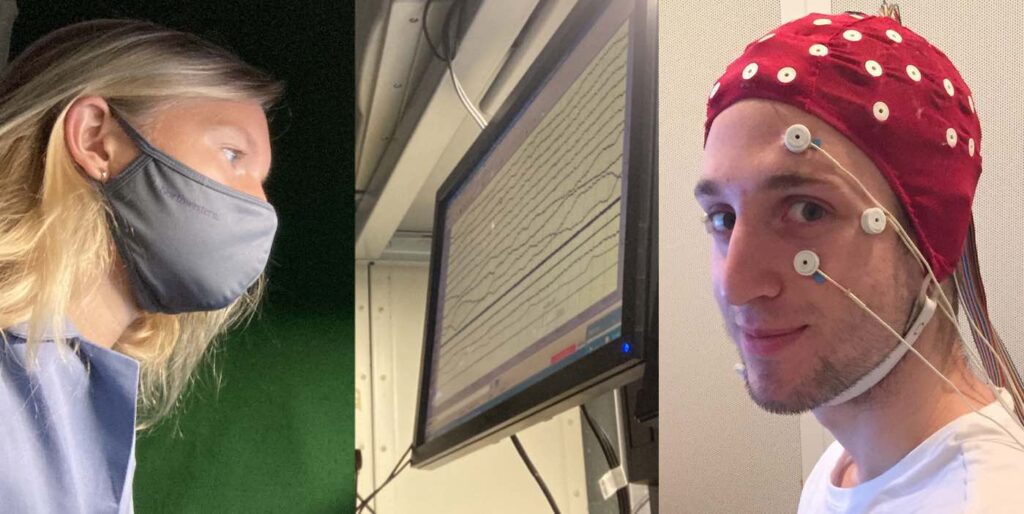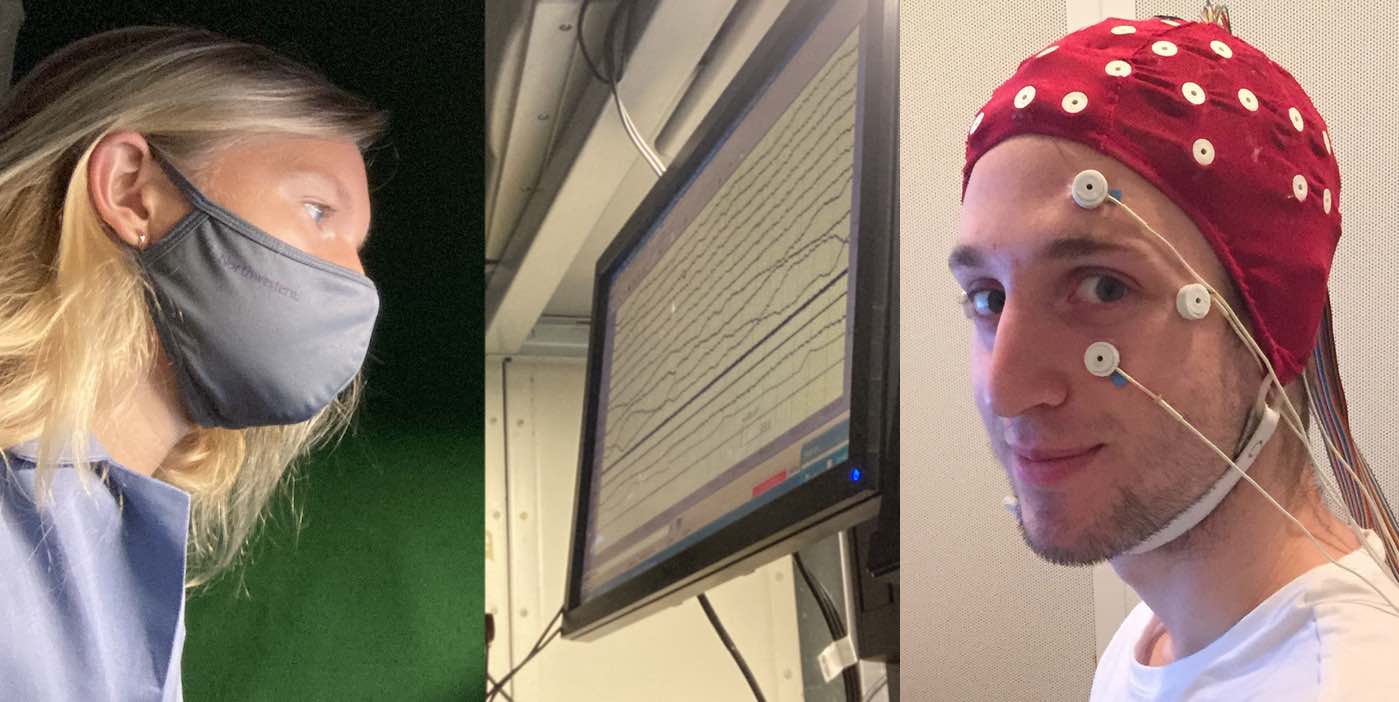Dreams take us to an alternative reality while we’re fast asleep. So, you might not expect that a person in the midst of a vivid dream would be able to perceive incoming questions and provide answers to them. But a new study led by Northwestern University researchers shows that, in fact, they can—and they developed an app for those who’d like to try it at home.

With partners at three universities around the world, they confirmed that real-time dialogue with a dreaming person is possible—and that dreamers were able to solve simple math problems and answer yes-or-no questions.
The researchers studied 36 volunteers who aimed to have a lucid dream, wherein a person is aware that they’re dreaming.
Using polysomnographic data, they could confirm that study participants had reached the REM stage of sleep—the rapid eye movement phase in which lucid dreaming can occur.
“We found that individuals in REM sleep can interact with an experimenter and engage in real-time communication,” said senior author Ken Paller, professor of psychology and director of the Cognitive Neuroscience Program at Northwestern. “We also showed that dreamers are capable of comprehending questions, engaging in working-memory operations, and producing answers.
“Most people might predict that this would not be possible — that people would either wake up when asked a question or fail to answer, and certainly not comprehend a question without misconstruing it.”
RELATED: Taxi Driver Saves His Marriage By Inventing Anti-Snore Pillow That He Dreamt Up in His Sleep
While dreams are a common experience, scientists still haven’t adequately explained them. Relying on a person’s recounting of dreams is also fraught with distortions and forgotten details. So Paller and colleagues decided to attempt communication with people during lucid dreams.
The researchers realized that finding a means to communicate could open the door in future investigations to learn more about dreams, memory, and how memory storage depends on sleep, the researchers say.
They also used a rotten egg smell to associate with cigarette smoking, which caused the dreamer less inclined to smoke the following week.
CHECK OUT: Inspired Sleep—How to Put Your Dreams to Work
The paper is unique in that it includes four independently conducted experiments using different approaches to achieve a similar goal. Studies were conducted at Sorbonne University in France; Osnabrück University in Germany; and Radboud University Medical Center in the Netherlands.
“We put the results together because we felt that the combination of results from four different labs using different approaches most convincingly attests to the reality of this phenomenon of two-way communication,” said Karen Konkoly, a Ph.D. student in psychology at Northwestern and main author of the paper published this month in the journal Current Biology.
“In this way, we see that different means can be used to communicate.”
RELATED: Dogs Dream About How Much They Love Their Humans, Says Harvard Psychologist
How this can be helpful to people
One of the individuals who readily succeeded with two-way communication had narcolepsy and frequent lucid dreams. Among the others, some had lots of experience in lucid dreaming and others did not. Overall, the researchers found that it was possible for people, while dreaming, to follow instructions, do simple math, answer yes-or-no questions, or tell the difference between different sensory stimuli.
They could respond using eye movements or by contracting facial muscles. The researchers refer to these successful conversations as “interactive dreaming,” and they chose questions with known answers so that they could assess whether participants’ answers were correct.
Konkoly says that future studies of dreaming could use these same methods to assess cognitive abilities during dreams versus while awake. They also could help verify the accuracy of post-awakening dream reports. Outside of the laboratory, the methods could be used to help people in various ways, such as solving problems during sleep or offering nightmare sufferers novel ways to cope. Follow-up experiments run by members of the four research teams aim to learn more about connections between sleep and memory processing, and about how dreams may shed light on this memory processing.
LOOK: Study Shows That Sleeping With a Weighted Blanket Can Reduce Insomnia
There’s an App for that…
Students in Paller’s lab group have developed a smartphone app for Android devices that aims to make it easier for people to achieve lucidity during their dreams. Information on the lucid app, and the link to download it, is available on Paller’s cognitive neuroscience lab site, here.
SHARE Your Thoughts About Lucid Dreaming While Posting the Suggestion on Social Media…




















